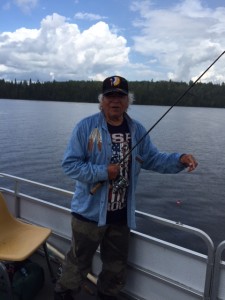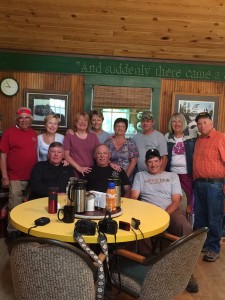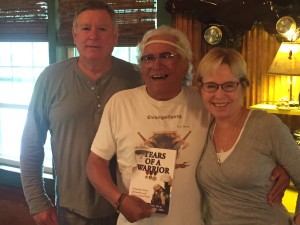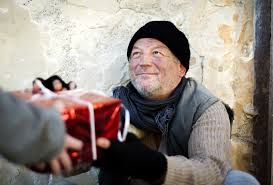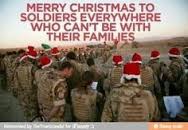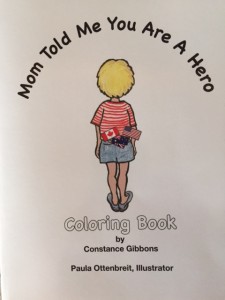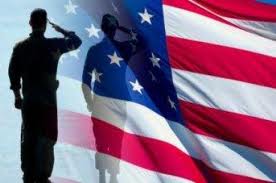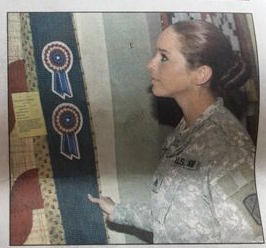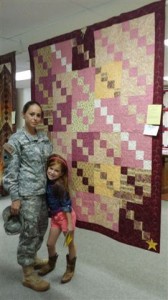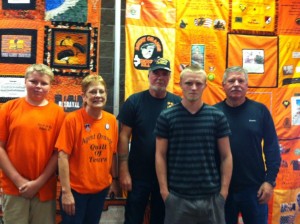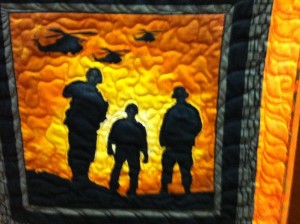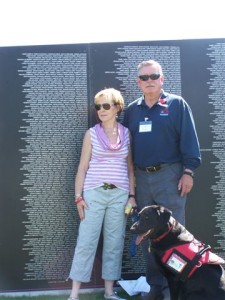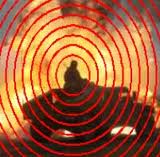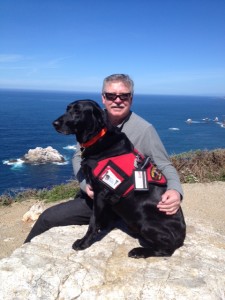Aug
25
VINCE THE PRINCE
Filed Under Courage, Faith, Fishing Therapy, Healing, Healing Waters, Journey, Life, Love, Military, Peace, PTSD, Rushing Wind, Tears of a Warrior, Wounded Warriors | Comments Off on VINCE THE PRINCE
By Janet J. Seahorn, Ph.D.
Once upon a time there was a very young boy who lived an incredibly difficult childhood. He was the oldest son of a family of five children – two younger sisters, one brother and a step brother. At eleven years old he became homeless, kicked out of his family by an abusive father. Drinking and beatings by his dad were endured on a regular basis. For five years he lived on the streets until he was old enough to join the army (1956-1965). Being of Navaho Indian decent, Vince the Prince was a fledgling warrior, and warriors always fight with perseverance and courage.
However, the trauma of his early childhood experiences followed him into the military. He was always in trouble, and believed he would get shot, knifed, or killed in prison. Life was pretty hopeless. Anger often consumed him, a normal coping mechanism many children of abuse use to mask their pain and unpredictable daily circumstances. But, Vince the Prince was a survivor, often called a “smart ass”. Being tough kept him alive, and being enraged kept him “feeling”.
How does a person ever survive such a life? According to Vince the Prince in 1970 he found faith in the spirit of the Lord, and this discovery saved him. Talking with him was pretty amazing as he could quote scriptures from the Bible better than most clergy. His personal commitment to the Lord handed him the hope that he lacked in his younger years and offered him a purpose in how he would live the rest of his life. In 1973 Vince was ordained as a street Evangelist. His parishioners were those confined to the jails and prisons in Chicago. He worked with the street people offering kindness, optimism, and faith. Having this new mission made him think of others before himself. He was no longer in the survivor mode, but in a vocation of serving those who, like him in his early years, were crushed by life experiences far beyond the control of a young boy. In 1983 he even completed his GED after having only a fifth grade education. Yep, pretty darn remarkable.
I asked him at the end of one of our conversations “What has been your greatest lesson?” His response, “No matter who or what you are, in God’s eyes you are precious.” And, ‘When all else fails turn to Jesus.”
Vince the Prince continues to work with young teens, many who are homeless like he was in his early years. Who better to understand their struggles, their fears, and their despair? Who better to provide a sense that no matter how dire your circumstances may seem there is always hope and that hope can lead to a miraculous future. Living life with purpose and a wicked sense of humor make Vince the Prince a very special human, indeed.
(I recently spent a week with Vince at a remote fishing camp in Canada called Rushing Wind. Tony and I were invited to work with veterans who have experienced the effects of combat and are finding ways to heal from the wounds of war.)
Listen peacefully to the wild call of the Loon.
Jan
8
Another New Year
Filed Under Happy New Year, Healing, Tears of a Warrior | Comments Off on Another New Year
It is January 2016 – another New Year. Where I live in Colorado and Wyoming the ground is covered by a layer of fresh snow. The brilliant white blankets the landscape with cleanness, somewhat like an artist’s blank pallet before she begins to paint. The idea that I can begin this year with a clean slate – that I can create whatever I choose brings a sense of hope and optimism for the coming year.
Interesting, my morning meditation topic was “I make a difference”. What a perfect goal for this new year that every day I have the opportunity to make a difference however large or small. Perhaps it is simply a smile to a stranger, a phone call to a friend, a quiet prayer for someone in need. Perhaps it is picking up one piece of trash on a sidewalk, shoveling a neighbor’s sidewalk or bringing a meal to someone who can’t get out to a grocery store.
There are countless ways I can make a difference. The important issue is not to merely THINK about doing a good deed. The essential action is to DO IT! The thought is nice but the ACT is necessary. If I was into tattoos – I’m not…. I hate needles – I would engrave on my wrist the following words, “I can and choose to make a difference”.
Happy New Year – make each day forward count.
Dec
24
Having a Happy Holiday
Filed Under American Patriotism, Bless Our Troops, Christmas, Family, Healing, Holiday Season, Journey, PTSD, Tears of a Warrior, Veterans, War | Comments Off on Having a Happy Holiday
by Janet J. Seahorn, Ph.D
It has been several months since I wrote the last blog. Honestly, I chalk it up to lack of motivation and simply feeling I had little else to say that would be worth anyone taking the time to read. Some individuals even commented on how many of the past blogs were a bit depressing. No kidding! Many of these individuals may have never had the combat experience or served in the military. It is difficult to understand something that has not been experienced. Humor at times can be difficult, especially during the holidays when you live with a person suffering with Post Trauma Stress. The experience is so not funny.
Yelling at those who don’t seem to appreciate or understand this type of suffering would definitely be something I’d have to mention in my next visit to church and confession. Just hope it might be a different priest who won’t say something like…. “Well, seems like you haven’t made much progress in this area”.
At this point my entry into heaven would be further compromised. At the very least I would be on Santa’s naughty list.
So, why am I writing a new blog now? Because it is Christmas. My favorite holiday (along with Easter, Thanksgiving, Valentine’s Day…). Really, I love the smell of the season, the food, the lights in and outside of homes, carols, and the various displays around town. Unfortunately, as much as I love Christmas, I am reminded of how many of our veterans find this particular time of year a huge challenge. Christmas may be an unpleasant reminder of all that was lost – those who never returned home and those still serving in harm’s way far from home. Depression, anger, feeling alone and removed could be emotions that have to be dealt with once again. It is hard to be jolly or even be around those who are jolly when you are fighting to just keep your head above the waters of Merriment.
Tonight Tony was talking on the phone with a friend and veteran who was facing another season of cheer and trying to simply get through it and keeping his emotions/temper in check. During the conversation Tony mentioned that it was this time of year when he was in Vietnam and severely wounded. He lost many of his men during a horrendous battle and later spent months in various military hospitals trying to heal from his injuries. All these decades later it is not the physical wounds that test him the most. It is the emotional aches that make the holiday season taxing. Instead of all the Ho, Ho, Ho,….. I know that certain days he wants to scream, No, No, No More!!!
For years I had no idea of what he faced or continued to face. My delight during this time of year only exacerbated his loss thus causing more than one argument. Now that we both know better, we finally do better. I try to be a bit calmer in front of him, and he tries to take better care of his emotional needs by having more quiet time, going on long walks or taking Bailey pheasant hunting. And both of us focus on counting our blessings.
We’ll be darned if we let the PTS Grinch steal Christmas ever again.
Aug
12
A SPECIAL COLORING BOOK
Filed Under Coloring Book, Dream, Family, Healing, Heroes, Military, Soldier, Tears of a Warrior, Veterans, Welcome Home | Comments Off on A SPECIAL COLORING BOOK
“Mom Told Me You Are a Hero”
-Constance Gibbons
Who didn’t like to use crayons and a coloring book as a child? I remember spending hours trying to use my box of many colored crayons to make the pages of my special book alive with various shades of whatever I thought the picture called for at the time. It never seemed to matter what the theme of the coloring book was about. The important thing was the simple act of making something of my own creation entertaining and exciting. When I was sad it took my mind off my childhood troubles… which sometimes were pretty significant for a young mind to understand. When I was tired, it gave me a way to stay occupied and calm.
It has been a long time since I’ve thought about the benefits of my early years of coloring. Then a friend told me about a children’s book she was writing to help young individuals process the reality of a parent serving in the military. What made this particular project so interesting was that it included a coloring book with crayons that went along with the original book. Gosh, I only wish I had thought of such a brilliant way to reach young minds dealing with the unique situation of having their moms or dads away for long periods of time and sometimes on numerous deployments.
The title of the book is Mom Told Me You Are a Hero by author, Constance Gibbons. There is a hard copy edition along with a coloring book with the same text. In my work, constantly studying brain development and the importance of early literacy, having both options is brilliant. The child can have the hard copy read to him/her, and then have the opportunity to color the pictures exactly as he/she desires. By doing the coloring, the child will be looking at some of the words in the text. The words explain the complex topic of war, yet, not in a scary manner. It describes how veterans come in all ages, sizes, shapes, colors, and genders. There are even examples of injuries a veteran may endure. It is very well written at an appropriate developmental level for children two years and above.
If you would like more information about these delightful and helpful books you may contact the author at cogconnexion@gmail.com
Jun
3
The Pain of Pain
Filed Under Healing, Injury, Knee surgery, Pain, Tears of a Warrior, Trauma | Comments Off on The Pain of Pain
by Janet J. Seahorn, Ph.D
![]() Golly, it is hard to believe that it has been several months since we posted a new blog. To be honest, we’ve been pretty busy with traveling, teaching, and working with veterans across the country, yet during any down time we had, I just didn’t feel like writing. Until now and even today I can’t fully admit that I’m eager to write again. But today, I simply suspect that I’m feeling a bit sorry for myself and want to at least think that by writing this blog I am doing something more useful than sitting on the couch or the toilet, lying in bed, and attempting to hobble around the house one more time.
Golly, it is hard to believe that it has been several months since we posted a new blog. To be honest, we’ve been pretty busy with traveling, teaching, and working with veterans across the country, yet during any down time we had, I just didn’t feel like writing. Until now and even today I can’t fully admit that I’m eager to write again. But today, I simply suspect that I’m feeling a bit sorry for myself and want to at least think that by writing this blog I am doing something more useful than sitting on the couch or the toilet, lying in bed, and attempting to hobble around the house one more time.
A week ago I underwent knee replacement surgery. For the life of me I am still trying to convince myself that this was a good idea or even necessary, since even on my worst day I never felt this awful or been in such pain. Does this sound a bit like whining? To quote Bret’s famous line at the end of the movie, Gone With the Wind, “Frankly, Scarlet, I don’t give a damn!” Doctor’s never fully explain or show videos of how much fun the recovery process will be, especially, the first two weeks. If they did, I wonder how many candidates would opt for the procedure. It’s kind of like when one is going through pregnancy classes, they never show the birth movies until close to the end of the nine months. Not that it is going to change one’s mind at such a late date or would make any difference because that living football inside of you has to come out sometime, and trust me it will not be “deflated”.
During my whiney period, I got to contemplate the effects of pain on our mental and physical world. My acute pain, hopefully, is only going to last for ten days to two weeks. So many of our veterans have to endure months and even years of unbelievable hurt not knowing when or if the agony will ever go away. I think about the thousands of individuals going through horrendous procedures to combat cancer, heart disease, diabetes, and many challenging illnesses. It is this kind of pain I really can’t imagine. I can’t imagine the stamina and courage it takes to get us through each day only to face another twenty-four hours of hell. One of my sister’s had to make this cancer journey and even today she continues to be one of my heroes.
The effects of severe pain at times can take over not just the body but the mind. It is hard to remember when you felt normal; it is tricky to maintain any kind of short-term memory. Heck, I couldn’t tell you what I did fifteen minutes ago, nor do I care. Thank goodness my children are grown and not in need of a “functional” mother. Bailey, my husband’s service dog, is pretty persistent, however, to remind me that he needs fed (if Tony isn’t around). The constant pain impacts my ability to maintain a positive attitude. It is so much easier to be gnarly than to be kind. Reminds of a Maxine cartoon my sister sent me. Constant, acute pain make it difficult to be empathetic to others in need or to even realize that even in your worst pain, there is probably, someone out there enduring an event even more challenging and taxing.
The only things I can do at these difficult moments are to take a deep breath, pray, count my many blessing, and be hopeful that this too will end. Oh, and to shout very, very loud, “I am never going to go through another ##### knee surgery again!!!!” Unless, dementia fails to remind me of how #### fun this experience has been.
Jul
22
This is my Quilt of Valor
Filed Under Healing, Life, Quilts of Valor, Tears of a Warrior, Today's War, War, Women in Combat | Comments Off on This is my Quilt of Valor
Guest Post by Carrie Hagen
SGT-TN Army National Guard
This is my Quilt of Valor.
There are many like it, but this one is mine. My Quilt is my gift. It represents my service life. I will appreciate it, as it was made in appreciation of me. My Quilt, without being made with love and support, would be meaningless. Without love and support, my service is meaningless. I must keep my Quilt always. I must respect those who show respect to me. I must remember my time of service along with those who remembered me. I will… My Quilt and I know that what counts in serving our country is not the places we’ve gone, the things we’ve done, or the battles we’ve fought.
We know standing for those in need makes it count. For them, we will stand… My Quilt of Valor is proud, as am I, because it reflects kindness found in American life. Thus, I will love it as a brother. I will love its wearing, its tearing, its patterns, its threads, its comfort, its true meaning, and its creators.
I will keep my Quilt dear and close, even as I am held dear and close. We will become part of each other. We will… Before God, I thank my supporters. My Quilt and the military are symbols of the services dedicated to our country. We are the pride of the people who made us. We will hold the memories of our military service life.
So be it, until we lay to rest and there is no enemy, but peace!
Aug
11
AGENT ORANGE: “QUILT OF TEARS”
Filed Under Agent Orange, Combat PTSD, Healing, Tears of a Warrior, Trauma, Veterans | Comments Off on AGENT ORANGE: “QUILT OF TEARS”
by Janet J. Seahorn, Ph.D
It was during our work in Hot Springs, SD with the American Legion and the “Honoring Our Heroes” event that we were able to view for the first time the “Quilt of Tears”. This is an unbelievable sea of orange fabrics with hundreds of patches depicting the stories of those Vietnam veterans and families who have suffered with the effects of Agent Orange.
Much of what is in this blog will be taken from a pamphlet I picked up at the quilt display. The quilt is being cared for, assembled, and driven across the United States by Shelia and Henry Snyder (amrdangel@aol.com).
Many veterans and their family members still do not know much about the effects of exposure to Agent Orange. An accurate number of casualties is “almost impossible to record due to various reasons, but the estimated number has been at 250,000 for quite a few years”, and the number grows every day. Even today, few Americans know that Agent Orange was a powerful herbicide used during the Vietnam War to deforest the jungle in order to set up base camps for our troops. Understanding the effects of Agent Orange on an individual is frightening. These powerful chemicals could literally take down a thick canopy of trees in a short few days. Think about, if it could destroy these huge trees in a matter of days — imagine what these chemicals could do to the fragile human body.
Exposure to Agent Orange can be fatal. Some of the diseases which are currently thought to be a result of these herbicides are Chloracne, Hodgkin’s Disease, Multiple Myeloma, Non-Hodgkin’s Lymphoma, Peripheral Neuropath, Porphyria cutanea tarda, Prostate Cancer, Respiratory Cancers, Soft-Tissue Sarcoma, Type II Diabetes, and illnesses and birth defects for the veteran’s children.
It is essential that veterans who have been exposed to Agent Orange get regular physicals complete with CAT Scans to detect the chemicals related to cancers. As with all diseases, early detection is critical to positive long-term outcomes.
The “Quilt of Tears” is a non-profit organization and relies solely on private donations. To learn more go to the website: www.agentorangequiltoftears.com. Individuals can get information on how they can create his or her own personal patch for the quilt at this site.
“Fear not my great soldier…for your story shall be passed down through the years because the fabric of your life is sewn into the Quilt of Tears.”
Jul
28
HEARING LOSS – THE TRULY SILENT WOUND
Filed Under Brain Injury, Combat PTSD, Dogs, Healing, Hearing Loss, Heroes With Hearing Loss, Service Dogs, Tears, Tears of a Warrior | Comments Off on HEARING LOSS – THE TRULY SILENT WOUND
by Janet J. Seahorn, Ph.D
Much of the time we write about the challenges of Post-Traumatic Stress, a silent wound no one can see, yet its effects can consume a person’s mind, heart, spirit, and even soul. However, there is a very physical silent wound that many individuals face, especially veterans who have been in combat zones where IEDs, bomb & RPG blasts and other tragic events cause a physical hearing loss.
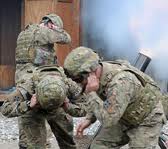 Losing any of our senses makes negotiating the daily routines of life much more difficult. And losing the loss of hearing separates one from the ability to participate in the most common of daily tasks. Simple activities like going to the store and trying to communicate with the checkout person, or straining to understand what your waiter is telling you at a restaurant can be challenging. Consider, also, what it takes to have a conversation on the phone. Most of us take these common everyday tasks for granted. Thanks goodness for new technologies like texting.
Losing any of our senses makes negotiating the daily routines of life much more difficult. And losing the loss of hearing separates one from the ability to participate in the most common of daily tasks. Simple activities like going to the store and trying to communicate with the checkout person, or straining to understand what your waiter is telling you at a restaurant can be challenging. Consider, also, what it takes to have a conversation on the phone. Most of us take these common everyday tasks for granted. Thanks goodness for new technologies like texting.
It was an early Friday morning and I was heading to the airport to catch a flight to Louisville, Kentucky. Tony had accepted an invitation for both of us to speak on several panels regarding hearing loss and combat veterans. In between the acceptance and the trip, he got a special opportunity to spend ten days in Alaska fishing for salmon and halibut. This proved to be an offer he couldn’t refuse. So you guessed it, I was doing this one alone, kind of like Tonto without the Lone Ranger.
Once I arrived in Louisville I had the wonderful privilege of spending several days with four wounded veterans and three of their wives. All of the vets had severe hearing loss from an IED explosion or near a suicide bomber, and one who had contacted an unusual illness that caused him to lose his hearing due to the cartilage in his body being eaten away. Three of the four vets also suffered with pretty severe traumatic brain injuries.
 What was quite amazing about this group was not what they had lost, but how far they had come in addressing their condition and moving forward. And to make this situation even more remarkable was that each had a wife who was incredibly supportive and tenacious on making sure that her husband fought for his recovery as she helped fight for appropriate services in the healing journey. One of the wives had a Master’s degree in Occupational Therapy while another had a background in working with the deaf and was skilled at sign language and other techniques to use when working with individuals faced with hearing loss.
What was quite amazing about this group was not what they had lost, but how far they had come in addressing their condition and moving forward. And to make this situation even more remarkable was that each had a wife who was incredibly supportive and tenacious on making sure that her husband fought for his recovery as she helped fight for appropriate services in the healing journey. One of the wives had a Master’s degree in Occupational Therapy while another had a background in working with the deaf and was skilled at sign language and other techniques to use when working with individuals faced with hearing loss.
What was an Aha Moment for me after being around these couples is the fact that there are “tip” sheets to assist with adjustments to hearing loss.
-Tips like stand still and face the individual with whom you are talking.
-Talk clearly.
-Try to keep to the point and don’t overuse words.
Darn, these were things Tony and I learned the hard way. I could have benefited knowing these years ago. The list reminded me of training our dogs… you do the same things… when giving directions or a command. Stand still. Use minimal words such as stay, sit, down, eat, kennel, etc…Kind of showed us that training ourselves sometimes is very much like training our animal friends.
For any person with a hearing loss and especially our returning veterans and families, get informed about all the new technologies and assist devices that can greatly enhance the ability to function. If you are in this category you will have to be your own fervent advocate. If you aren’t satisfied with your services, keep pushing for any new ideas or programs that are available. Do your Google searches. The Veteran Centers are pretty overwhelmed with the number of veterans needing services, therefore, you will need to be the bull terrier not willing to give up or give in until you are convinced all that can be done, has been done.
Adapted hearing devices are available through many American companies. One such organization is Hamilton CapTel. It produces a caption phone that has been a Godsend to Tony. Hamilton CapTel has just launched a new program called Heroes with Hearing Loss www.heroeswithhearingloss.com The program focuses on education and information for navigating the world of the hard of hearing. Take a look at their video. You may even want to “Like” them on Facebook to get more information.
http://www.multivu.com/mnr/62613-heroes-with-hearing-loss-new-program-debuts-vfw-national-convention
In the end I am reminded of a quote by Joseph Fort Newton. It clearly captures the essence of so many of our military personnel and their families who continue to wake up every day and courageously move forward toward their personal healing and their mission of making a difference for others.
“We cannot tell what may happen to us in the strange medley of life. But we can decide what happens in us, how we take it, what we do with it —– and that is what really counts in the end.”
May
29
NOT FORGOTTEN
Filed Under Healing, Memorial Day, Tears of a Warrior, Veterans Plaza, Vietnam Veterans, War, Wounded Warriors | Comments Off on NOT FORGOTTEN
by Janet J. Seahorn, Ph.D
It has been a really long Memorial Day Week and we are truly exhausted.
For the last six days we have been privileged to be a part of bringing the large version (80%) Traveling Vietnam Wall to Fort Collins,Colorado. The city of Fort Collins put in its request back in 2003 to host this special event over Memorial Day Weekend. With extensive planning throughout the last six months, the Veterans Plaza Committee of Northern Colorado wondered how many people might visit the Wall and pay homage to all who made the ultimate sacrifice in service to their country.
Our answer came and all were humbled.
Thousands came daily. They came to pay their respects. They came to pray. And some came to simply heal a bit more. Seeing the names of classmates and friends lost in battle is sad indeed, but viewing the names of fallen comrades with whom you served is far more profound.
I watched as young children were educated about how all those names got on the structure. One small child innocently asked, “You mean they are all dead?” For this tiny boy it was hard to comprehend such a large number. For those who served it was even harder to comprehend and accept once again the huge price of war.
The Vietnam Wall is more than a memorial. It is a reminder to our nation of what we did wrong in welcoming our young men and women back after serving overseas. That lesson, I believe has been learned. However, there is so much further we need to grow. As our military returns from war, as a nation we need to make sure that they are comforted, healed, and given work that will allow them to have a solid future. And we need to make sure we are more aware of those veterans and families who have endured a great deal in the name of freedom. They are the silent minority and too many are finding it gut-wrenching hard to reintegrate back into their communities.
After observing the thousands of individuals who visited the Traveling Vietnam Wall these last many days, I truly believe we, as a community/nation, have the will to accomplish this task of human restoration.
What is hard, is taking the time during our very busy days to notice what needs to be done and then do it. Each small step we take moves all of us closer to a healthier and more humane nation.
God does truly bless America when we take the time to meet the needs of others.
May
25
EVERY WAR HAS TRAUMA
Filed Under Combat PTSD, Healing, Memorial Day, Post-Traumatic Stress "Injury", PTSD, Stress, Tears of a Warrior | Comments Off on EVERY WAR HAS TRAUMA
by Janet J. Seahorn, Ph.D
Every so often we get asked a question about why past war veterans like those from World War II seemed not to suffer as greatly from Post-Traumatic Stress. Our answer is that “they did” but as in all past wars very few knew what they were experiencing or how to talk about such a silent wound. Who would understand their despair? Who would judge them for being inferior, less courageous? How could they talk about what they were suffering when there were no words/names to this despondency?
Once again, one of our friends sent us an article by Duane Jeffrey, an emeritus professor of biology at Brigham Young University. The article was titled, “Mental Malfunction in Mankind’s Wars. The author gave some staggering statistics about World War II veterans both American, British, and even German troops. It made me wonder, not that these veterans were troubled by Post-traumatic Stress, but that they somehow were able to move forward each day not ever knowing or understanding what was happening to them.
When we read about the various battles of any war, it is pretty obvious that the horror and devastation of what our young men and women went through was beyond mere words. Mr. Jeffrey’s writes, More than 1,393,000 U.S. military personnel were treated for psychiatric “breakdowns” in WWII. Forty percent of all medical discharges were for psychiatric reasons. That amounted to 504,000 troops formally discharged due to “psychiatric collapse.” The battle for Okinawa alone produced some 26,000 cases of psychiatric stress and care.
Teams of psychiatrists, social workers, and psychologists tried to screen men headed for combat, to identify which would reach a breaking point and which would not. This proved fruitless: It soon turned out that anyone, everyone, had a breaking point.”
In addition, he went on to write, that during the battle of Guadalcanal more than 500 Marines were reduced to “sensitivity to sharp noises, periods of amnesia, tendency to get panicky, tense muscles, tremors, hands that shook. … Men were frequently close to tears or very short tempered.”
According to Dr. Jeffery’s research, a report in 1946 indicated that severe emotional trauma in infantry soldiers occurred “in the first 90 days of combat”. The article went on to state that “of those soldiers who survived 60 days of fighting on Normandy’s beaches and the hedgerows immediately inland from there, fully 98 percent… became psychiatric casualties”.
After reading this article, it made me pause to once again wonder how much our current military can take when being deployed for so many tours. Since we have known about these statistics for decades, why are we asking so few to continually sacrifice so much? Surely as a nation we can and should do better.
Over this Memorial Day weekend, be sure to not only thank every veteran you may know, but to pray for those and their families still serving.
And lest we forget, remember those who made the supreme sacrifice and never returned home.





